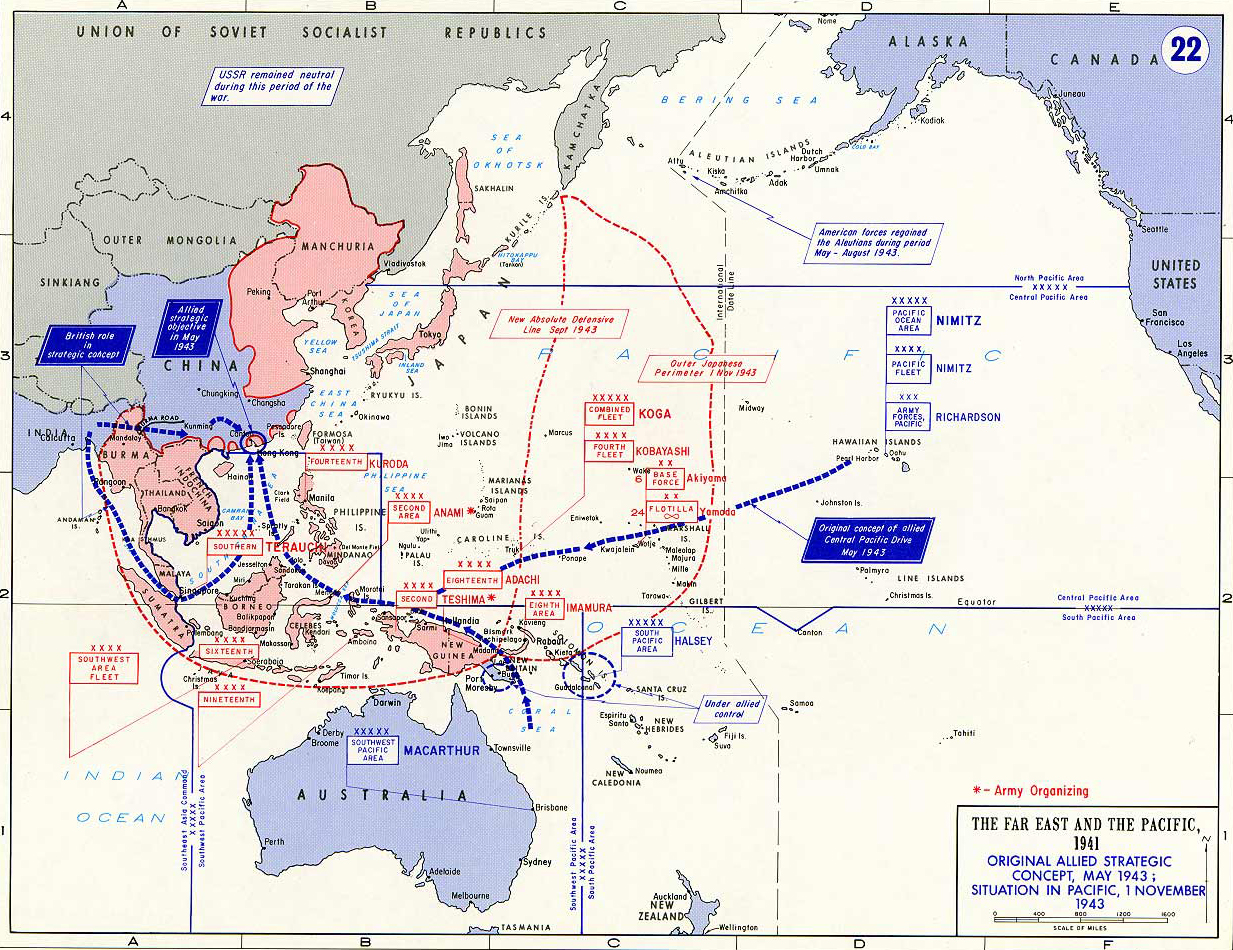Map Description
History Map of WWII: Far East and the Pacific 1943
Illustrating:
- Original Allied Strategic Concept, May 1943
- Situation in the Pacific November 1, 1943
Original Allied Strategic Concept, May 1943
In May 1943, during the Trident Conference in Washington, the Allied strategic
concept for the Far East and
Pacific was reaffirmed within the framework of the "Europe First" policy, which prioritized the defeat of Nazi
Germany before shifting full attention to Japan. This approach was agreed
upon by Allied leaders at major conferences, such as Casablanca (January 1943),
where it was decided that while
the Pacific theater would continue to receive significant resources, the bulk of Allied military power-especially
shipping, aircraft, and ground forces-would be directed toward the European and Mediterranean theaters until
Germany was defeated.
Despite this prioritization, the Allies maintained an active offensive posture in the Pacific, aiming to contain
Japanese advances and begin the process of rolling back their territorial gains. The strategic concept involved
a two-pronged approach: General MacArthur’s forces would advance through New Guinea
toward the Philippines, while
Admiral Nimitz’s forces would push through the Central Pacific via the Gilbert,
Marshall, and Mariana Islands.
This dual advance was designed to isolate and neutralize major Japanese bases, cut off their supply lines, and
ultimately bring Allied forces within striking distance of the Japanese home islands.
Situation in the Pacific November 1, 1943
By November 1, 1943, the situation in the Pacific had shifted significantly in favor of the Allies. The Japanese
perimeter had been breached in several key areas, most notably with the Allied victories in the Solomon Islands
and New Guinea campaigns. The Allies had gained valuable experience in amphibious operations and jungle warfare,
and the Japanese were increasingly on the defensive, struggling to reinforce and resupply their isolated garrisons
due to Allied air and naval superiority.
Strategically, the Allies were poised to launch major new offensives. Preparations were underway
for Operation
Galvanic, the invasion of the Gilbert Islands—specifically Tarawa and Makin—which would commence on November 20, 1943,
marking the opening move of the Central Pacific offensive. Meanwhile, MacArthur’s forces continued their advance along
the northern coast of New Guinea.
The overall Allied strategy was now focused on accelerating the pace of operations, exploiting Japanese weaknesses,
and establishing forward bases that would enable sustained air and naval attacks on the Japanese inner defensive
perimeter and, eventually, the home islands themselves.
Credits
Courtesy of the United States Military Academy Department of History.
Related Links
About the Second World WarWWII Timelines

